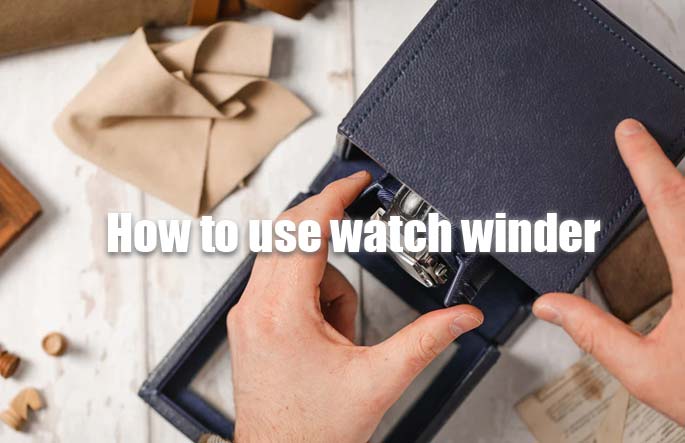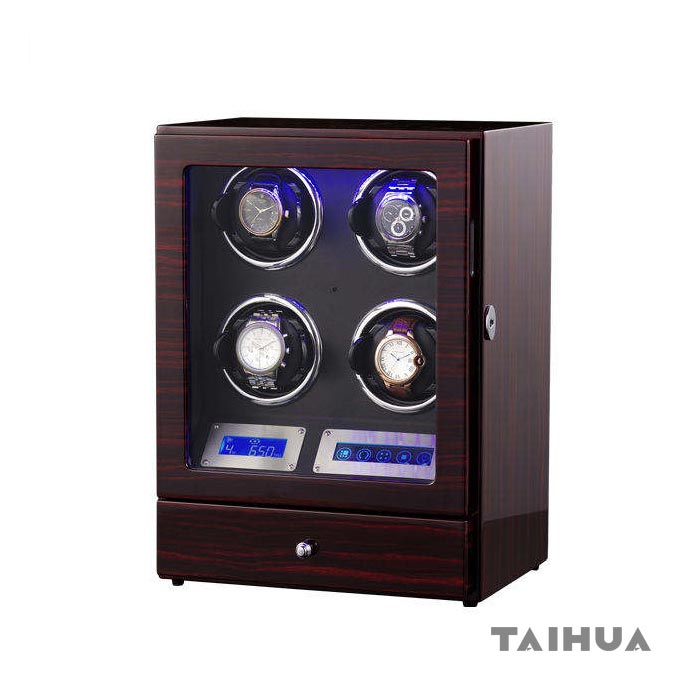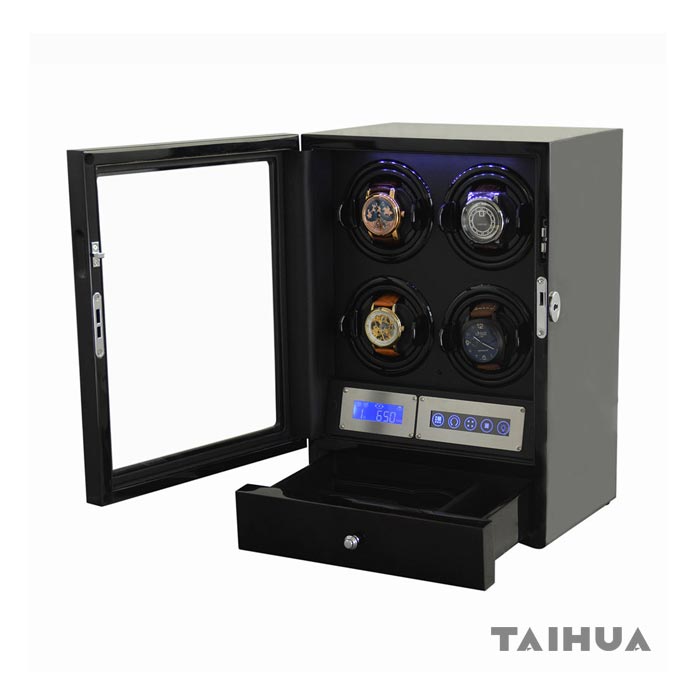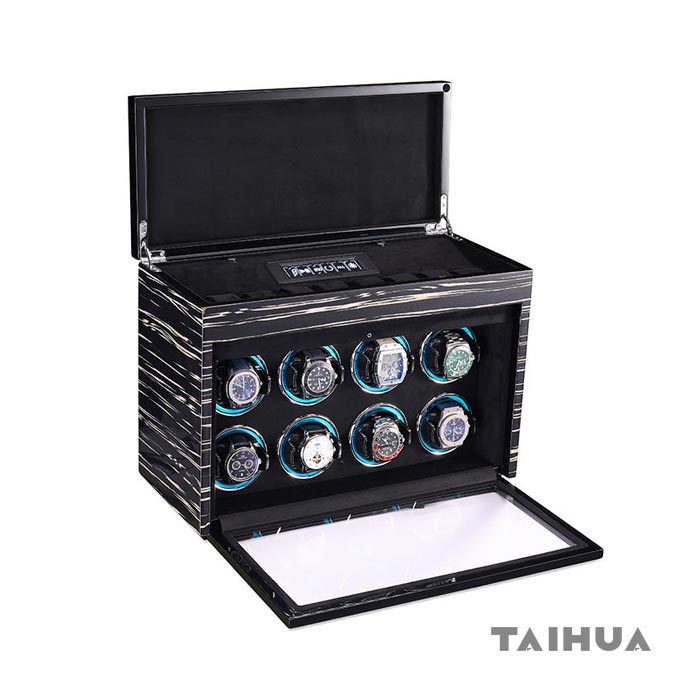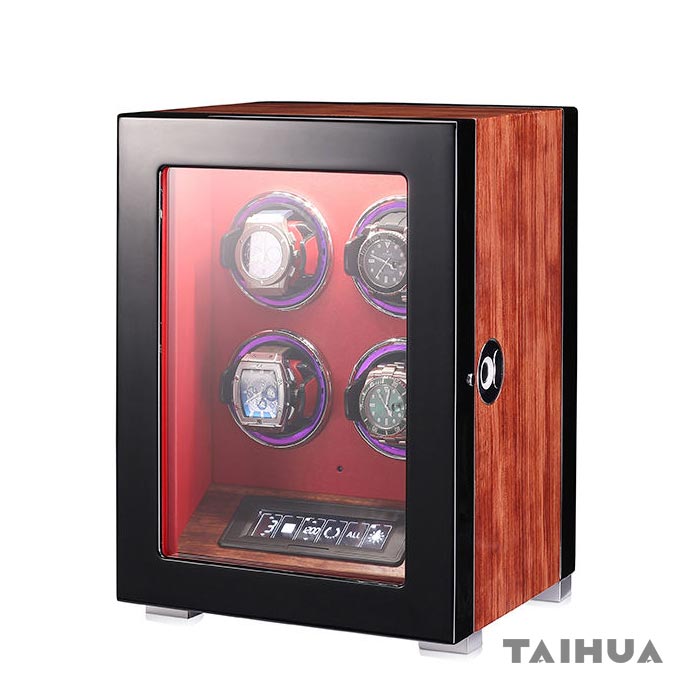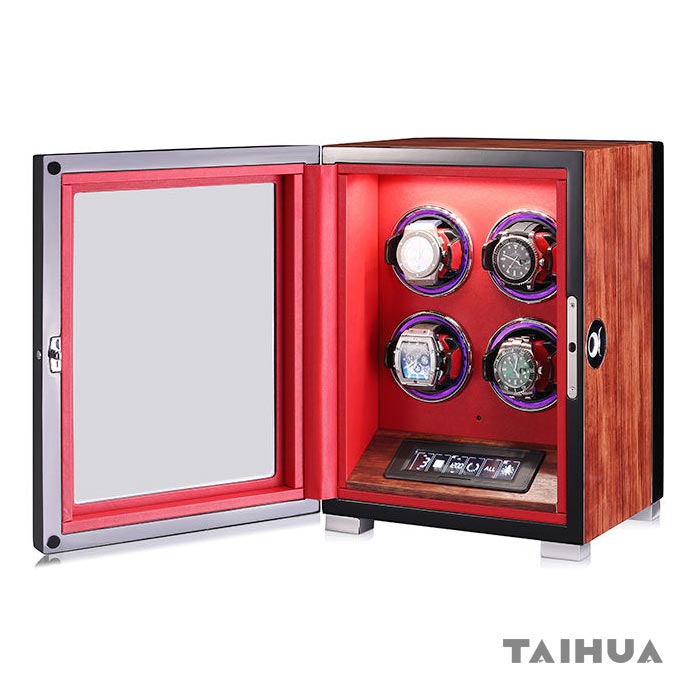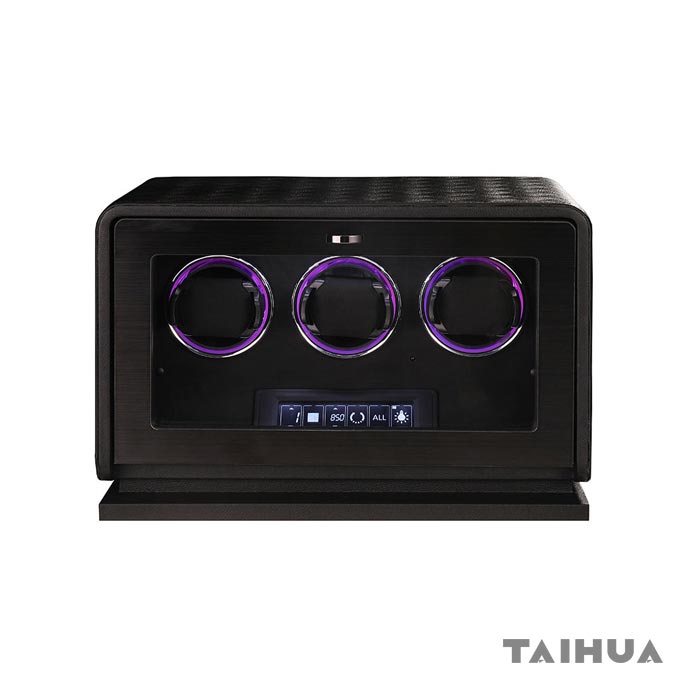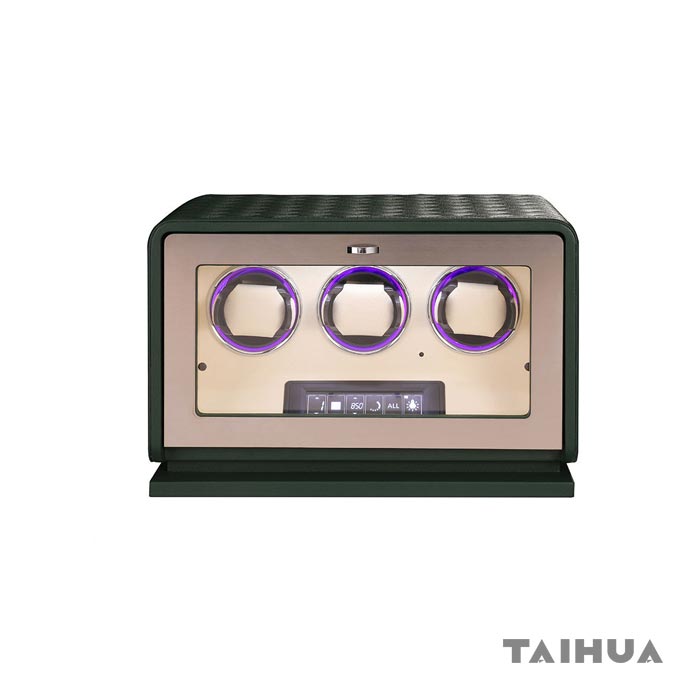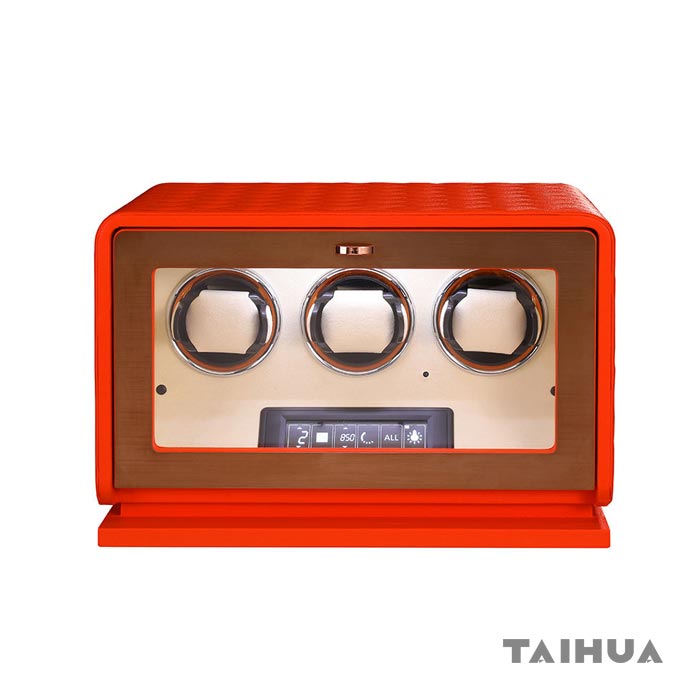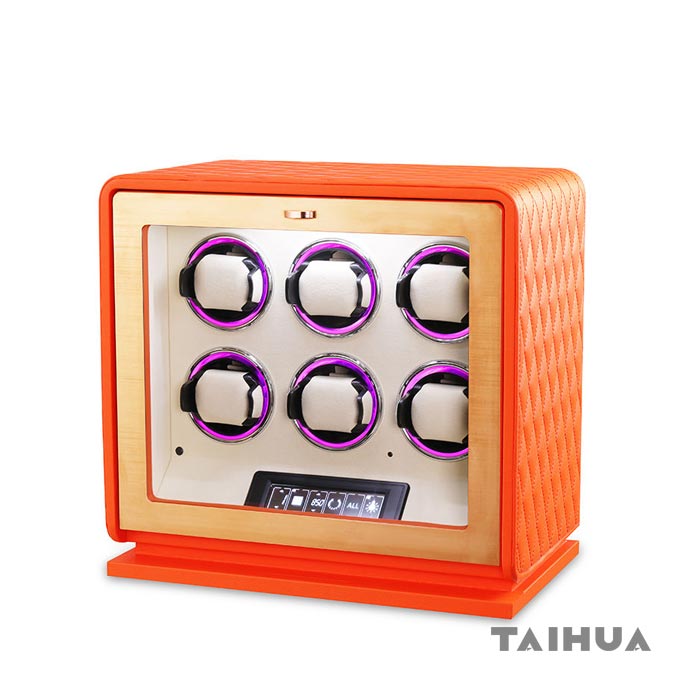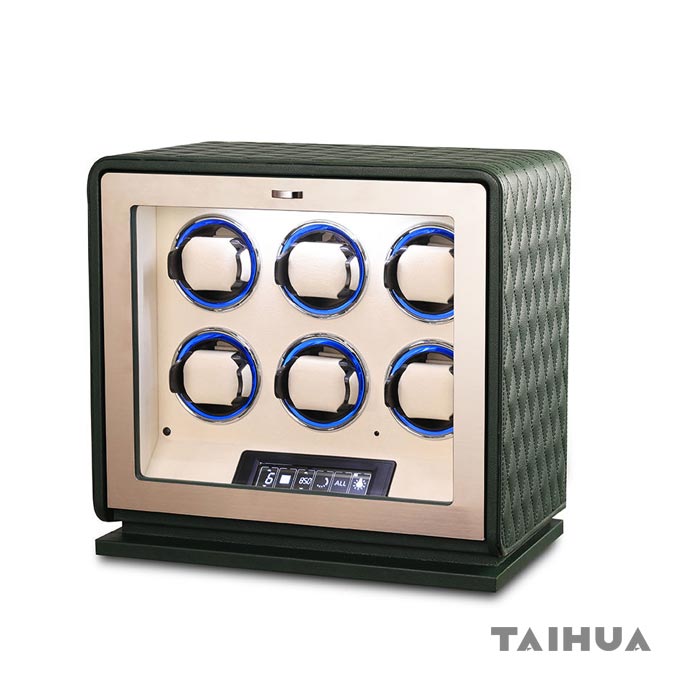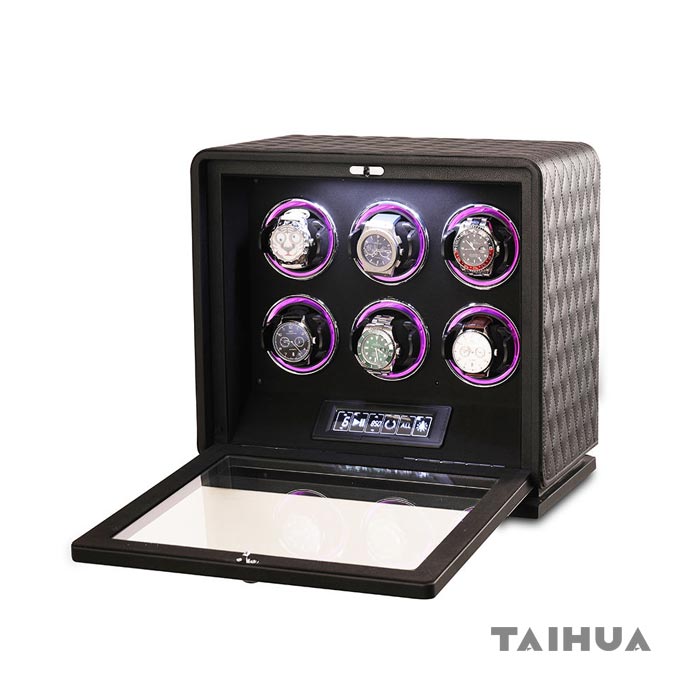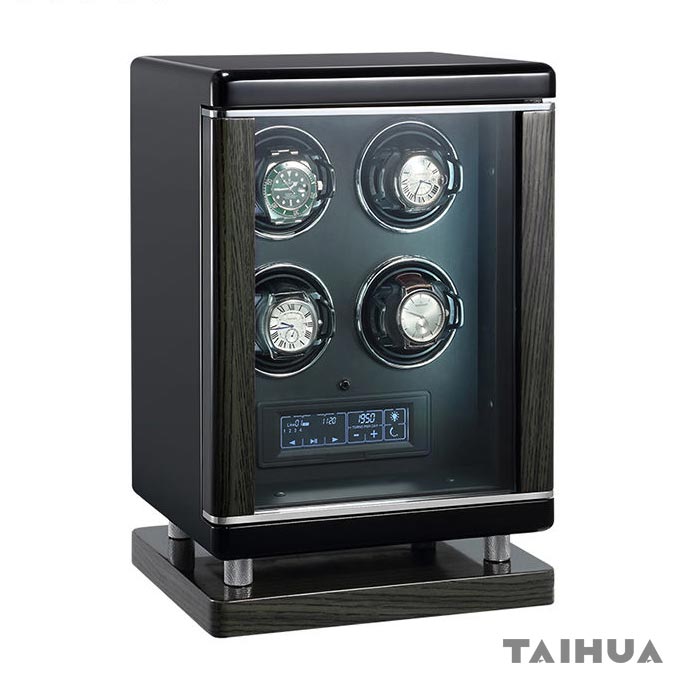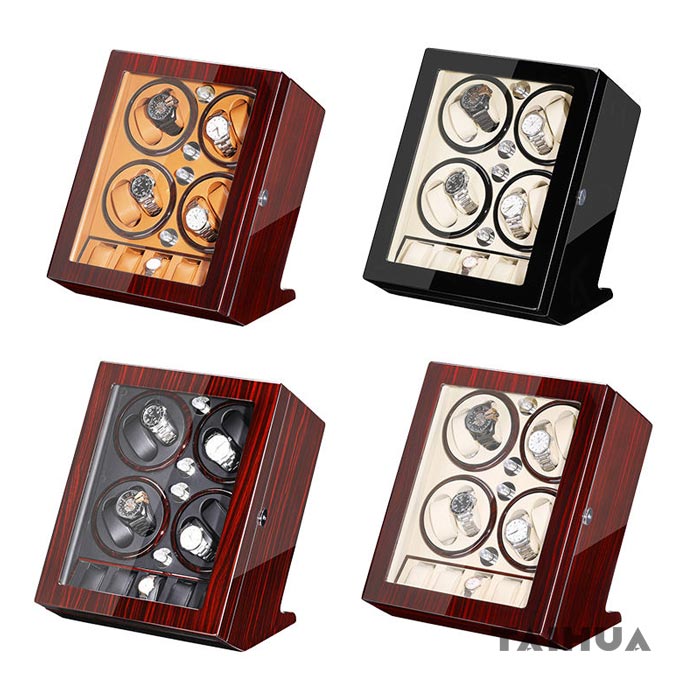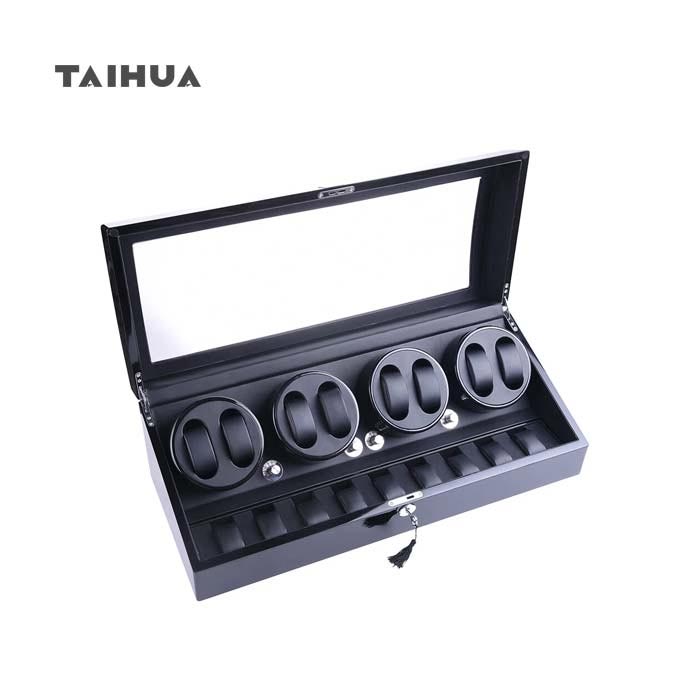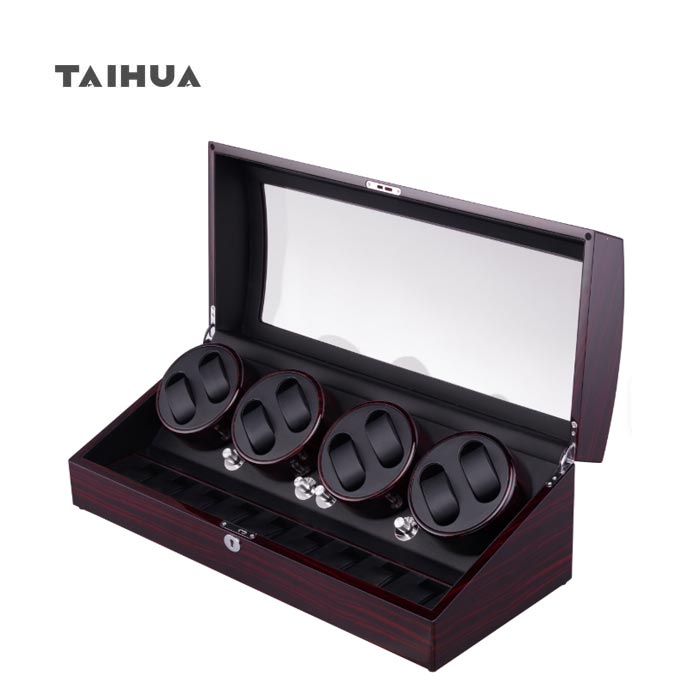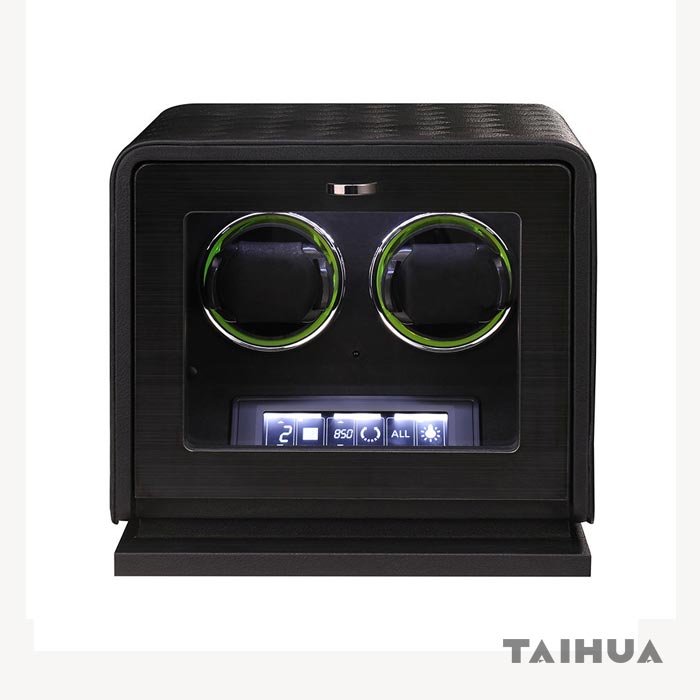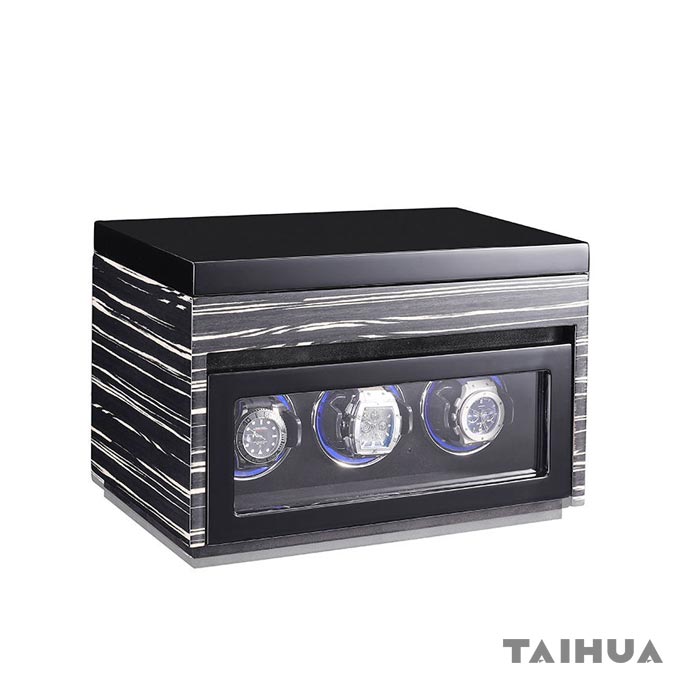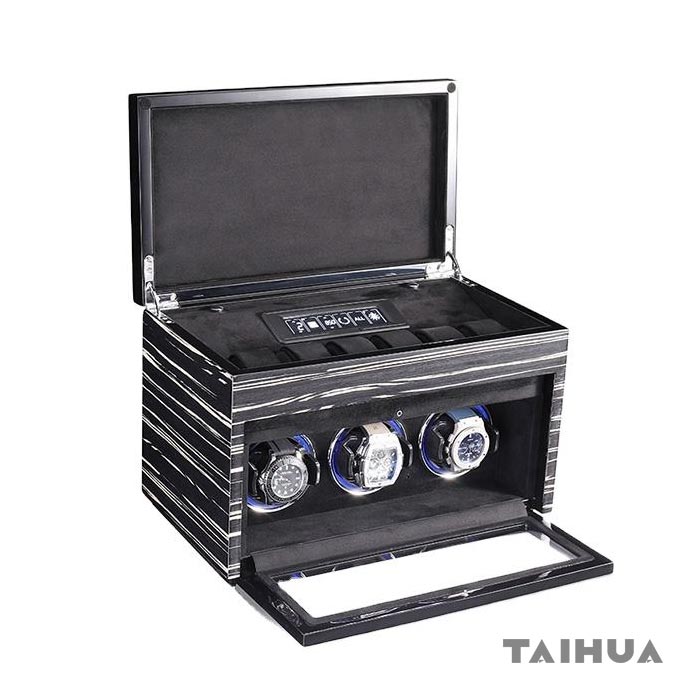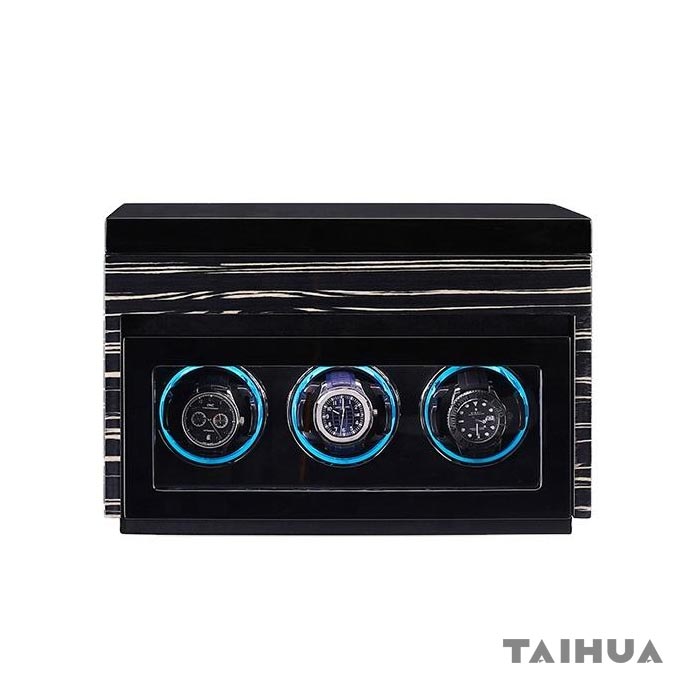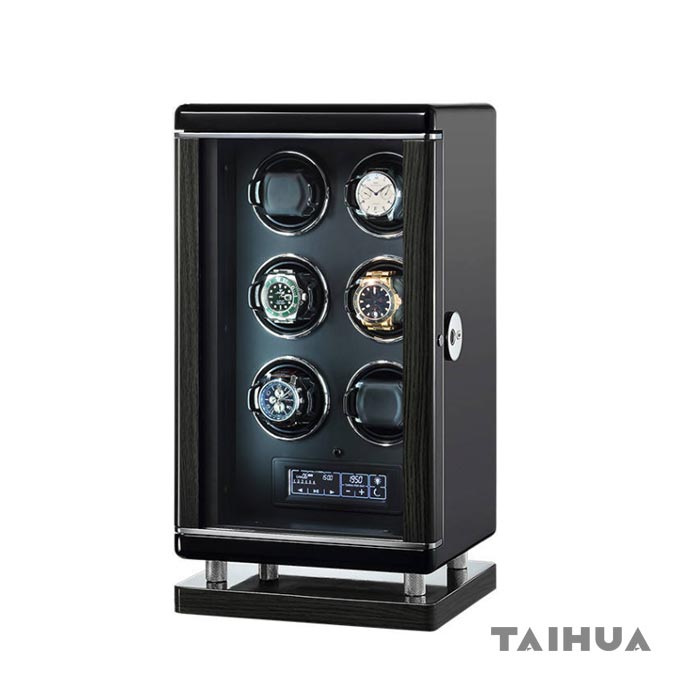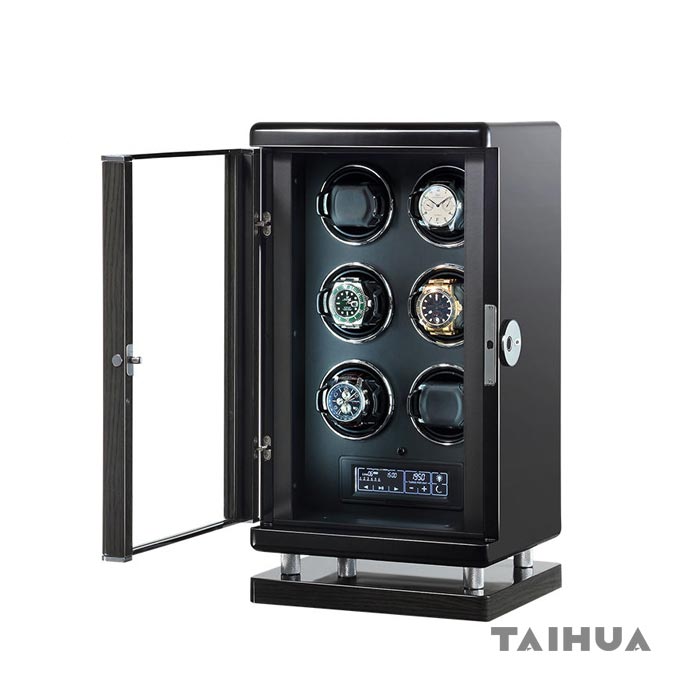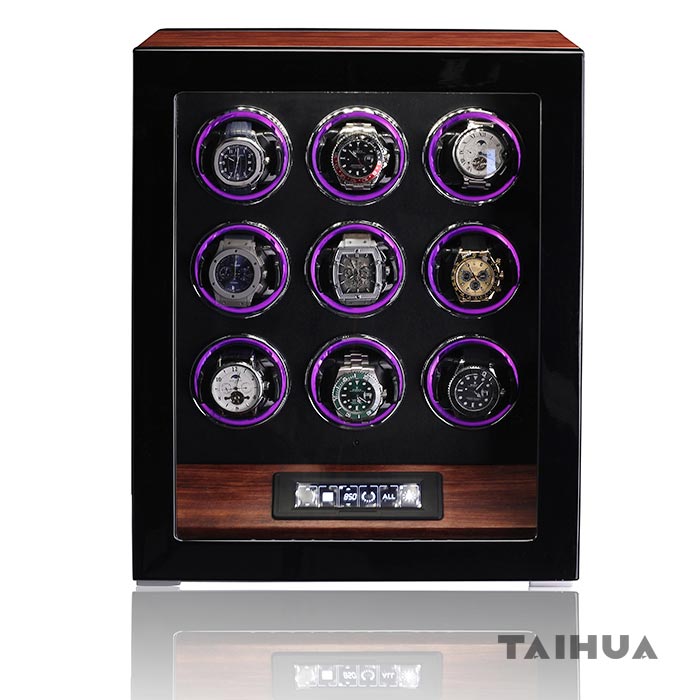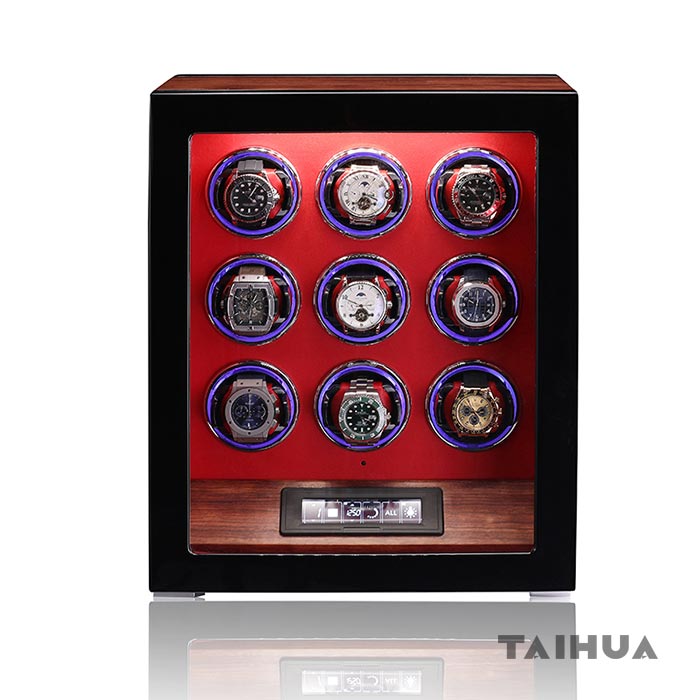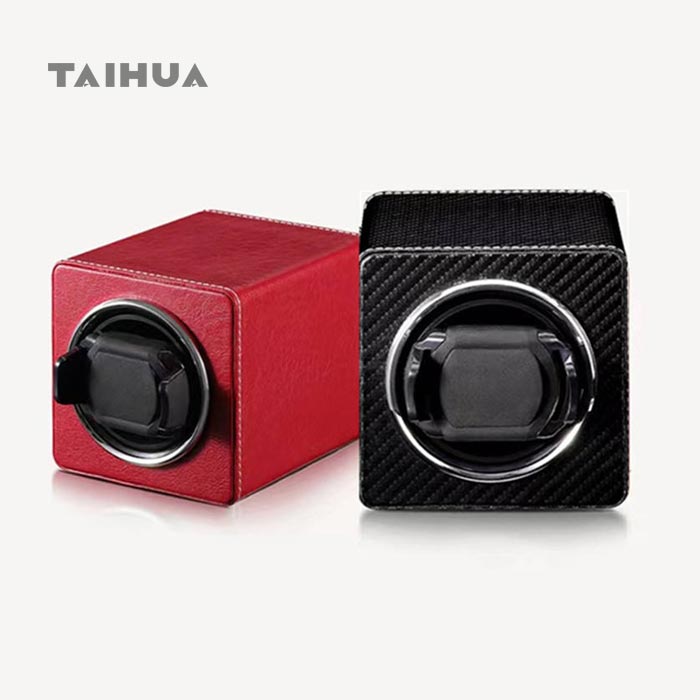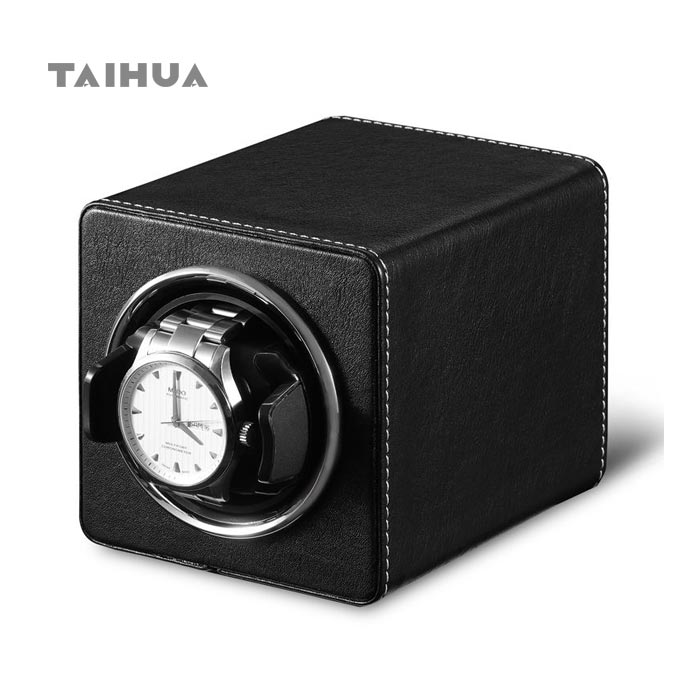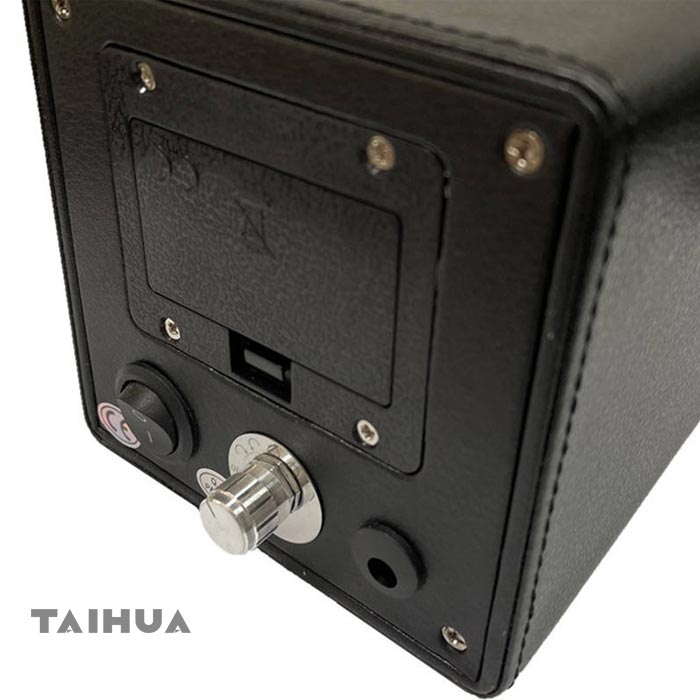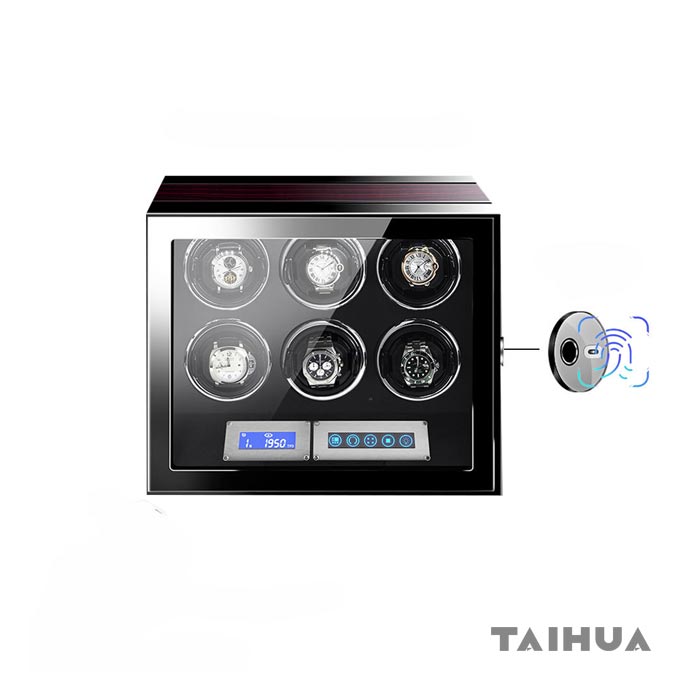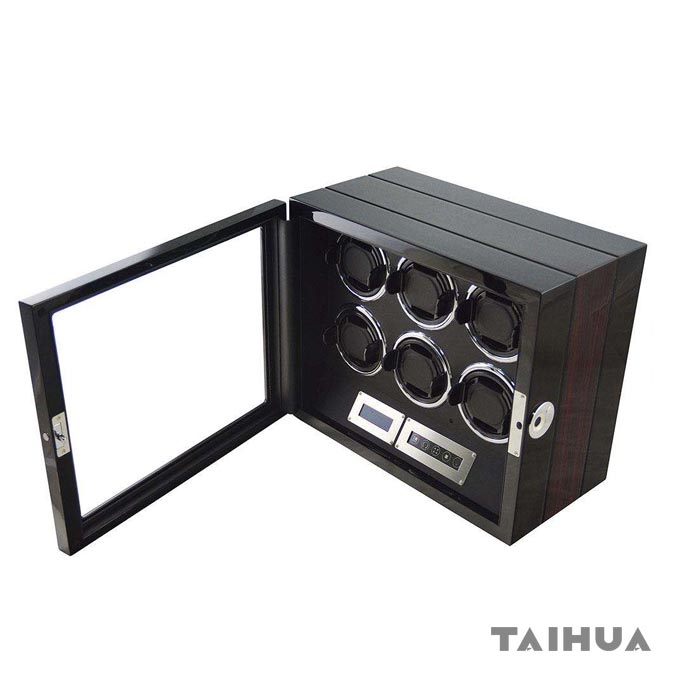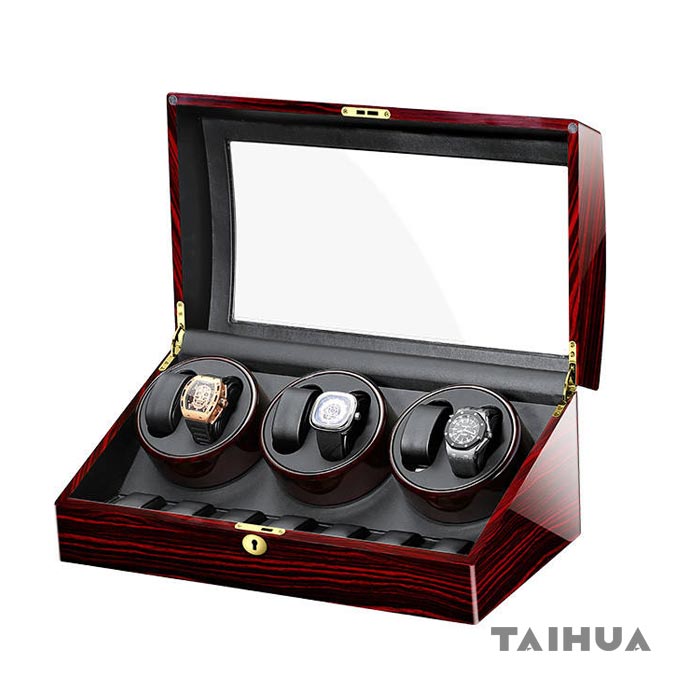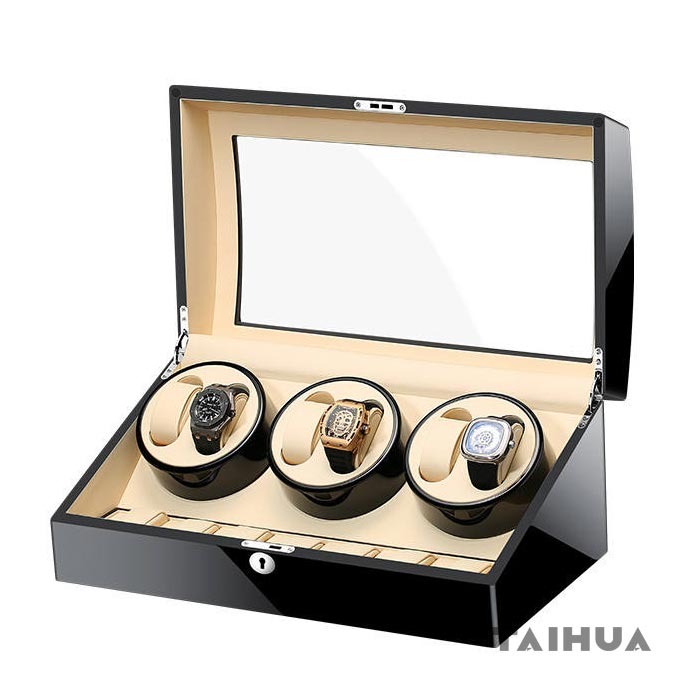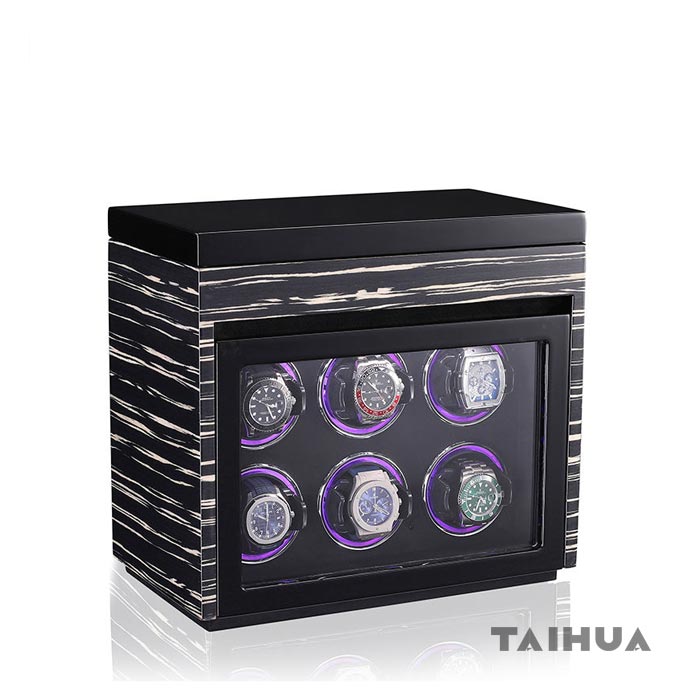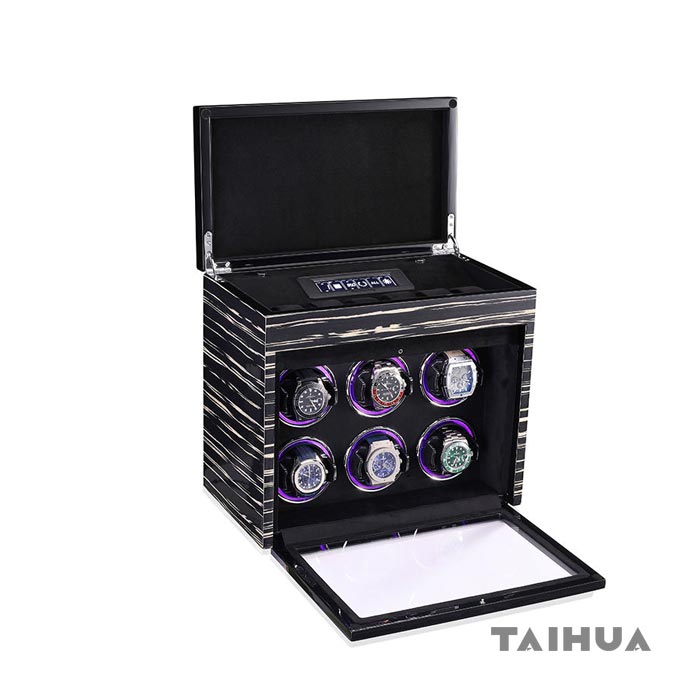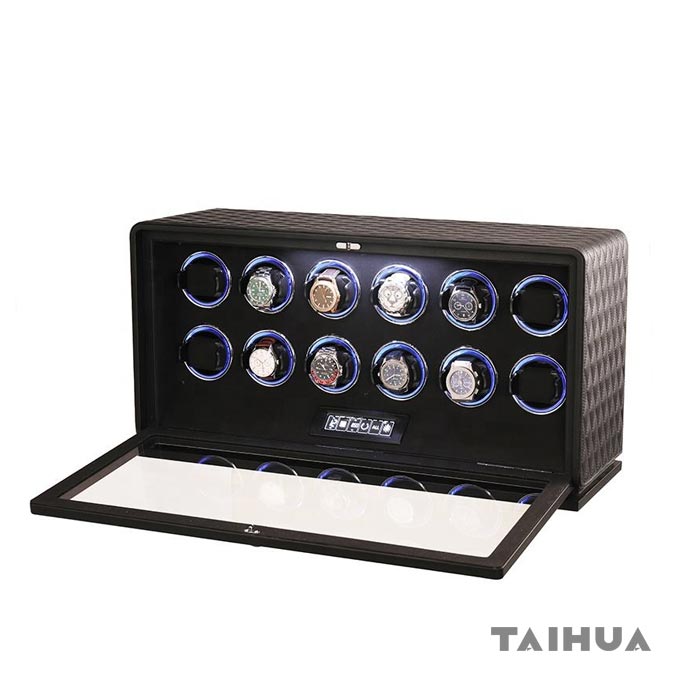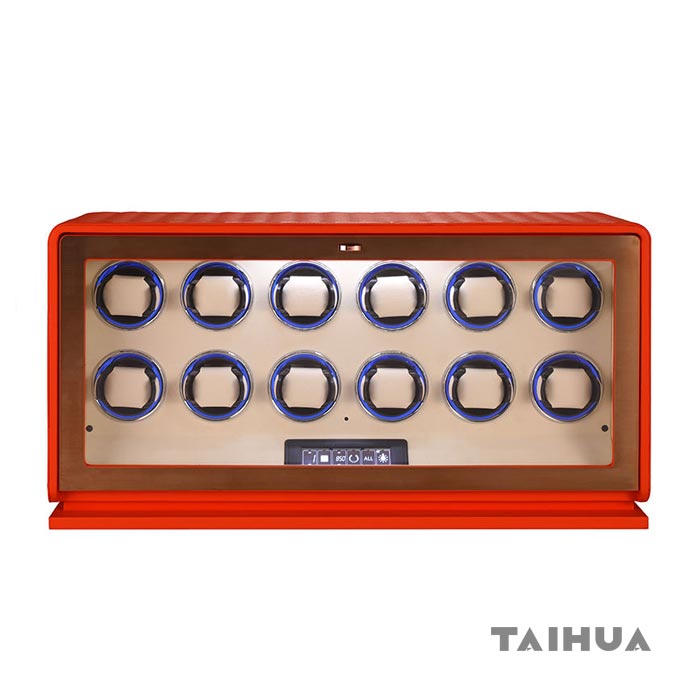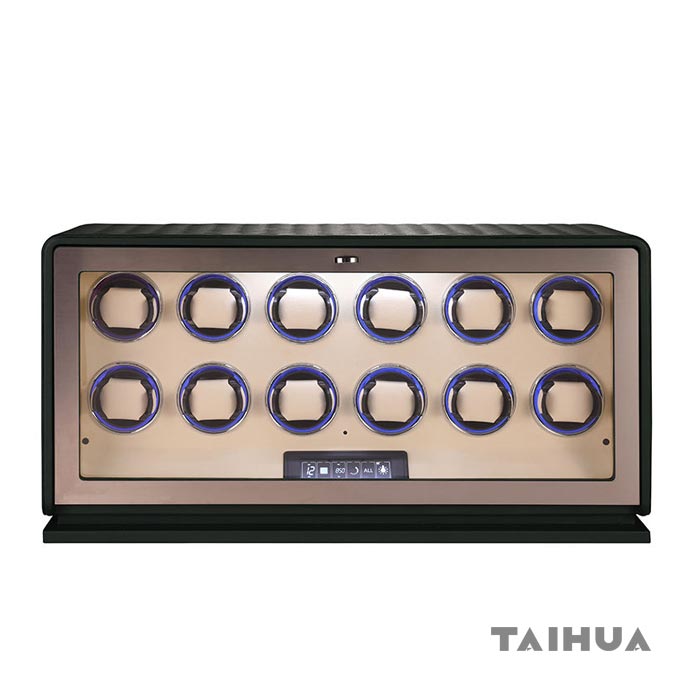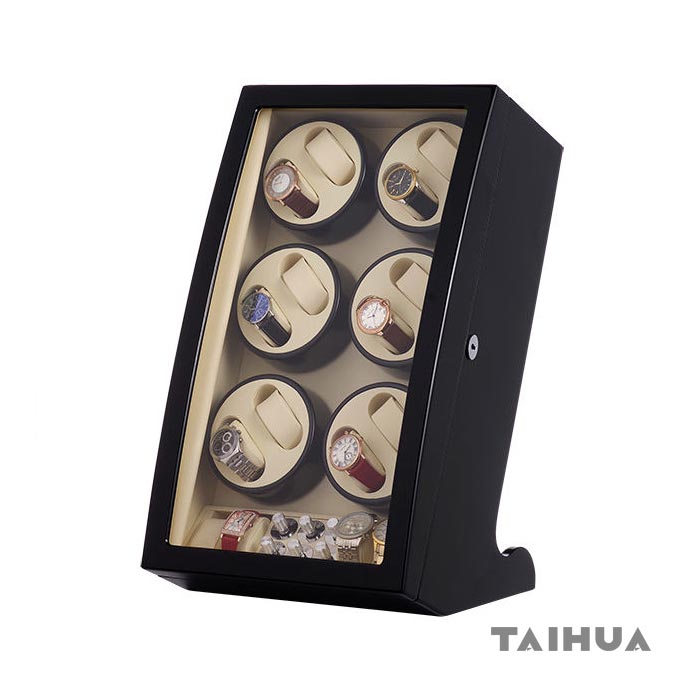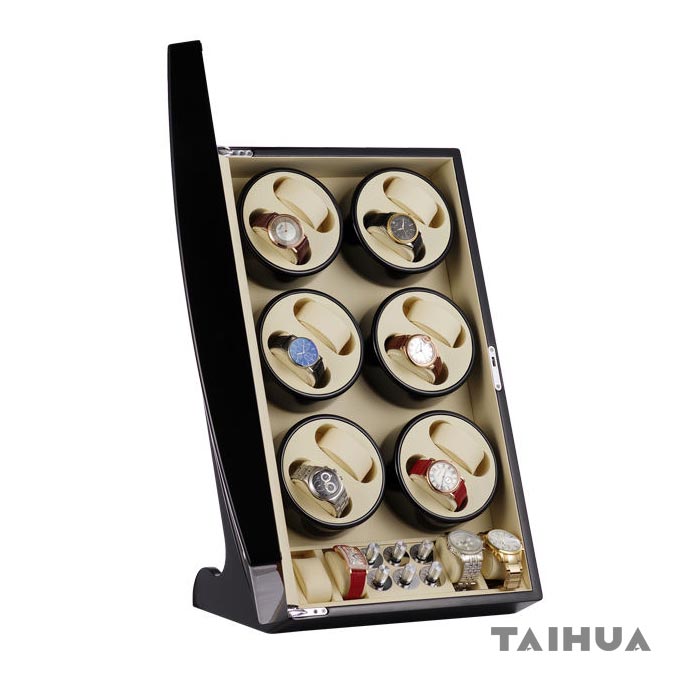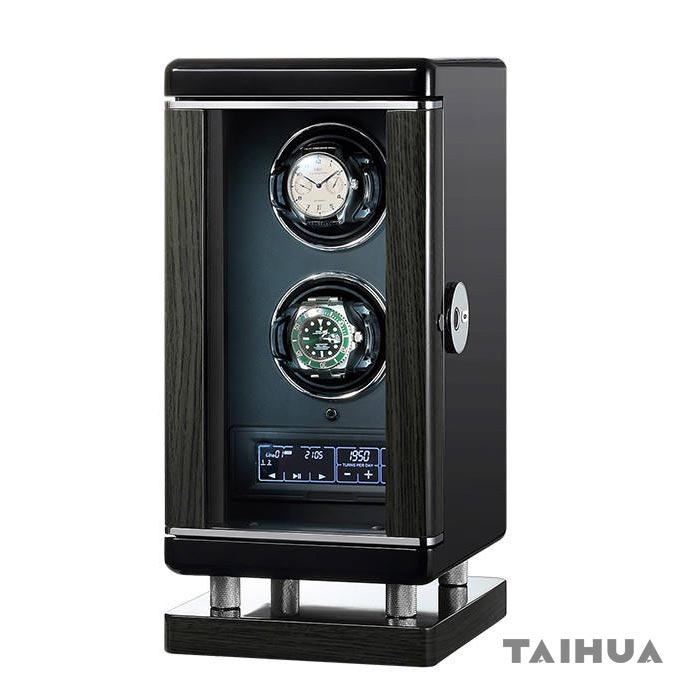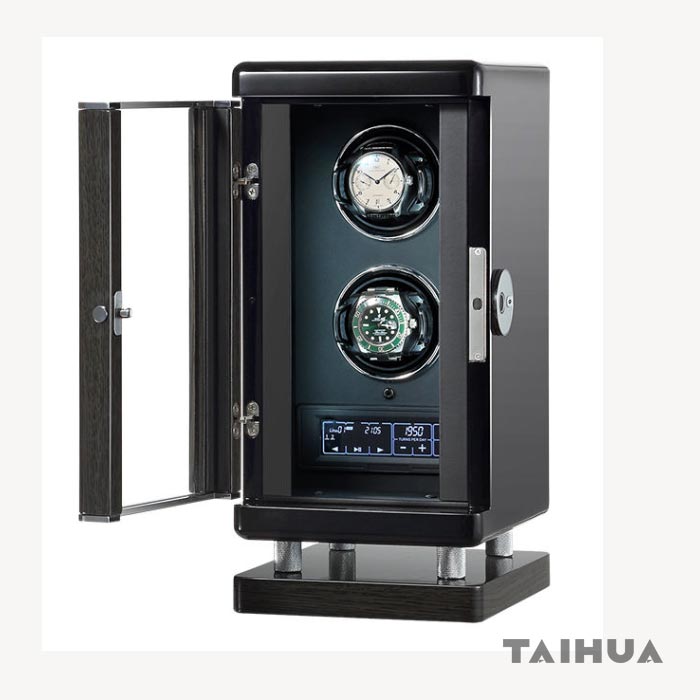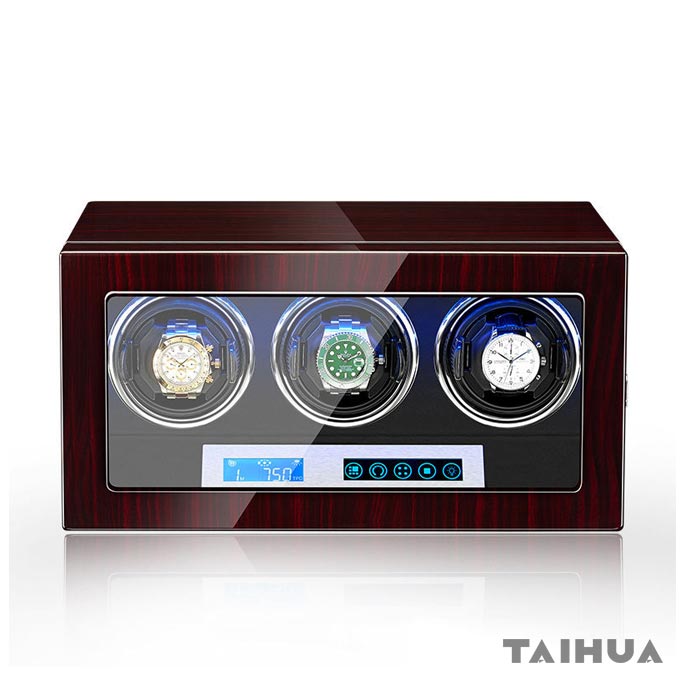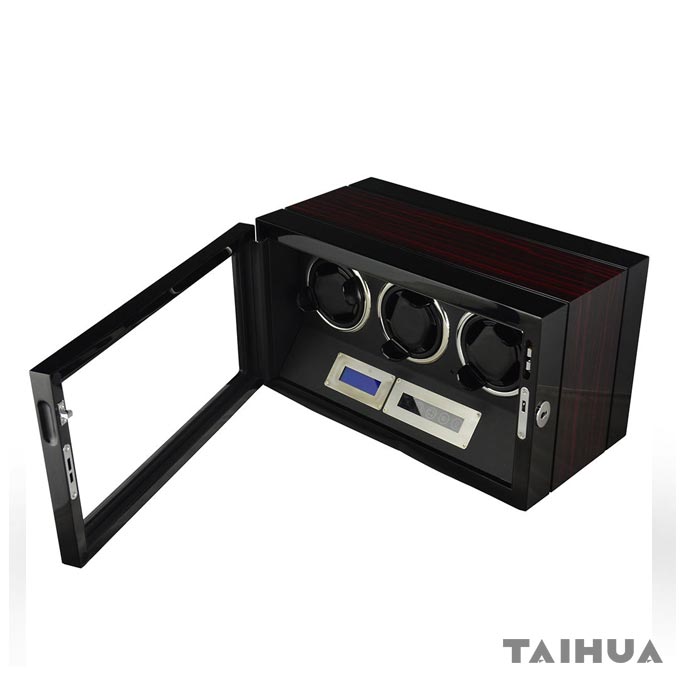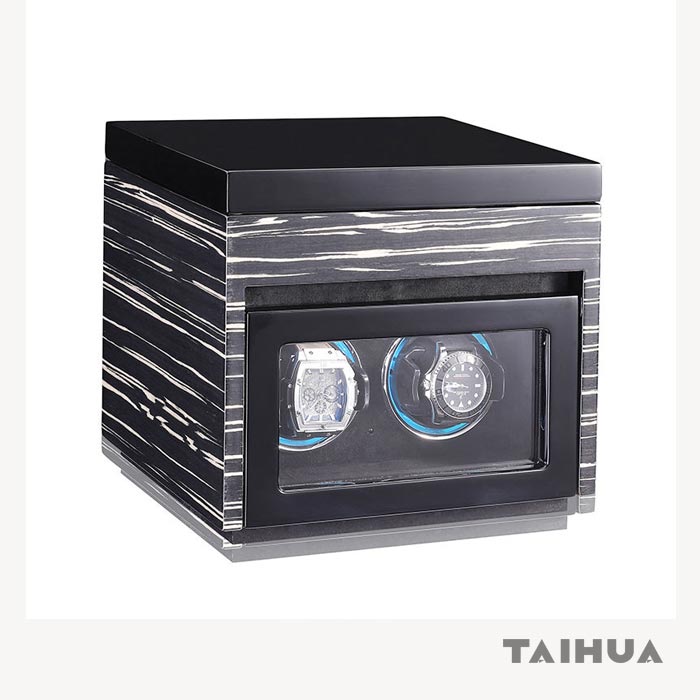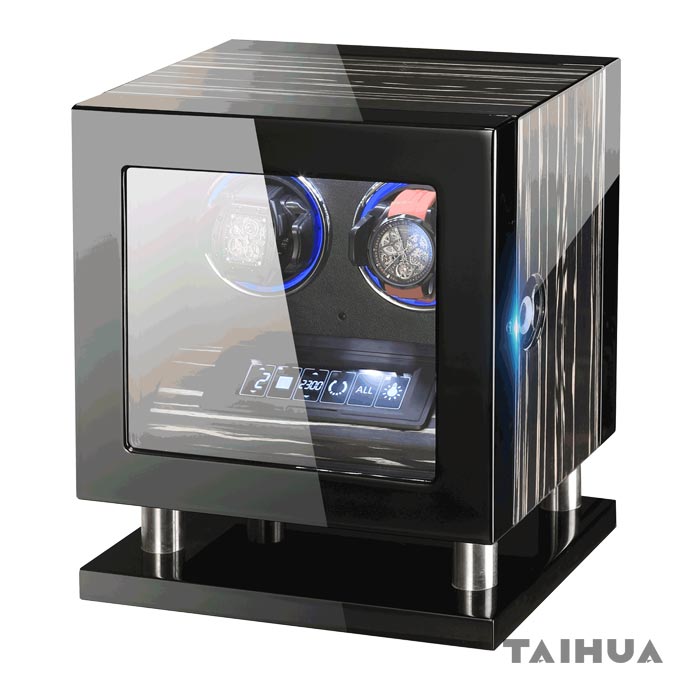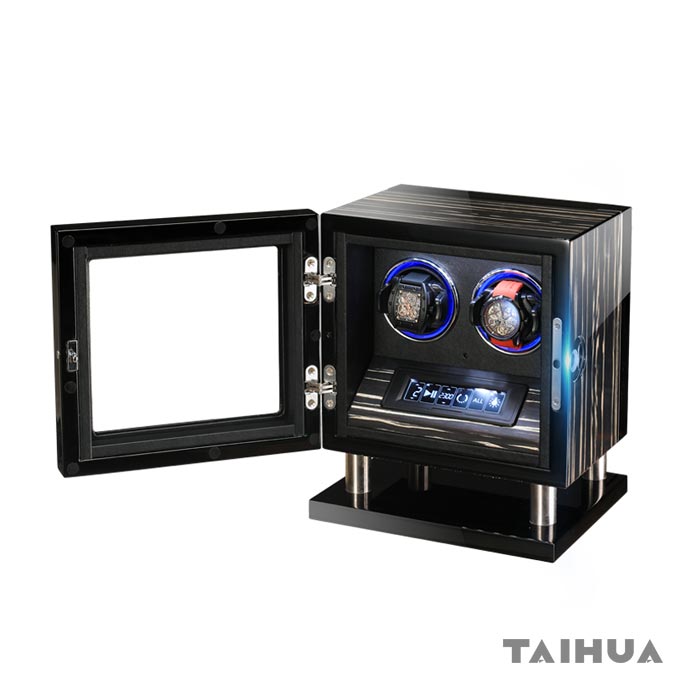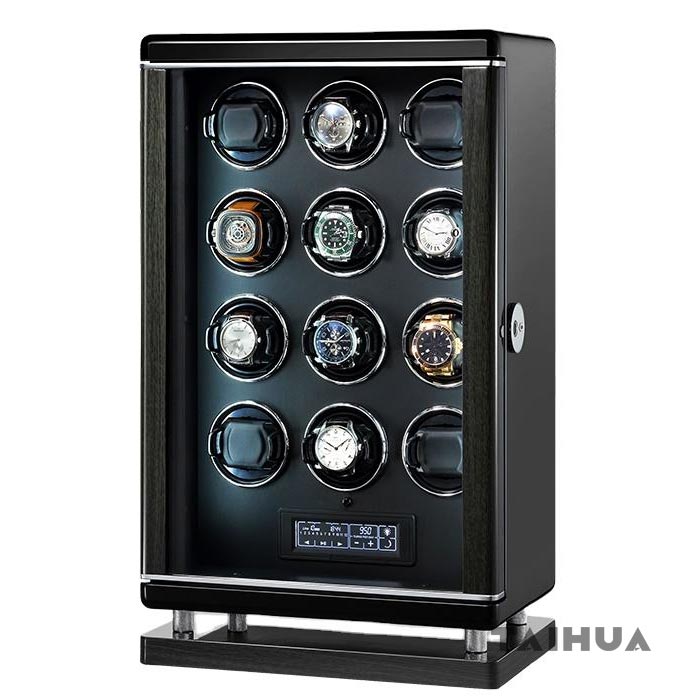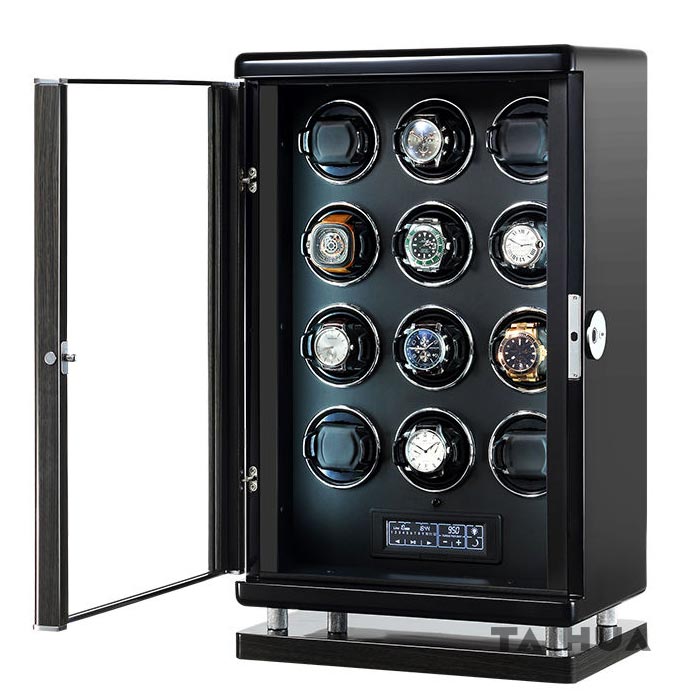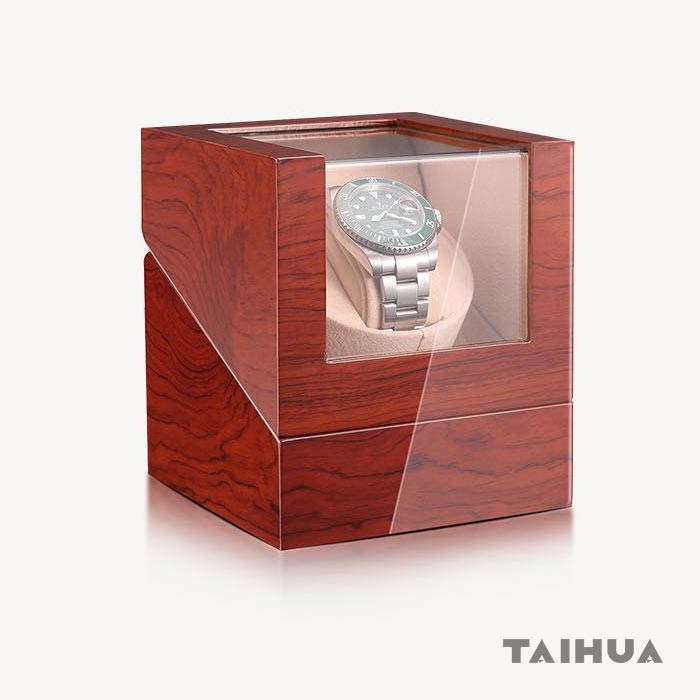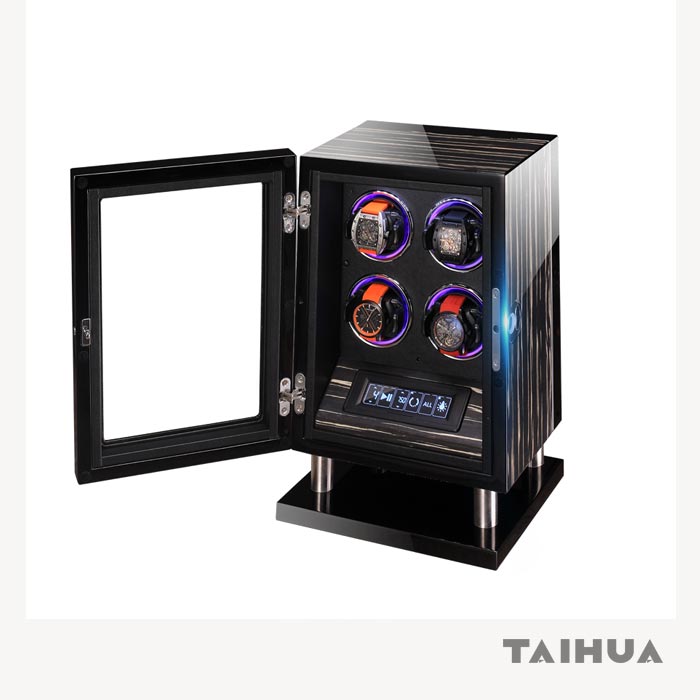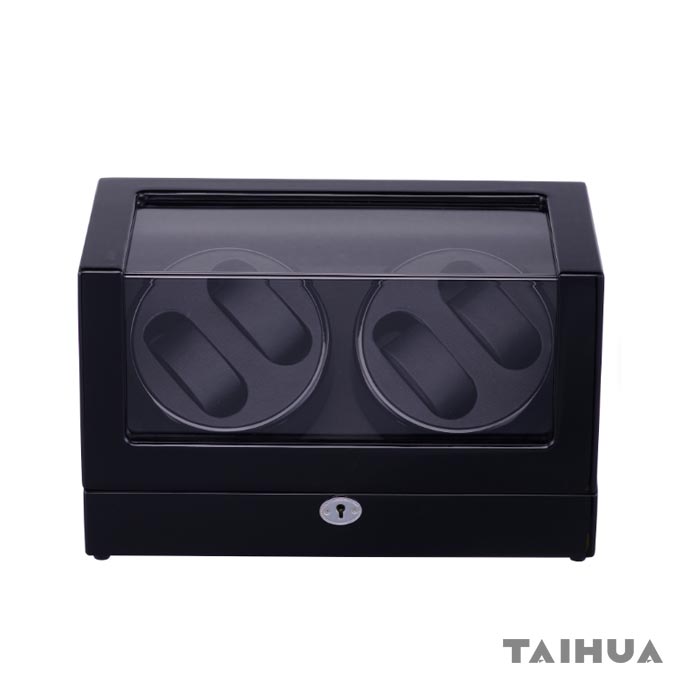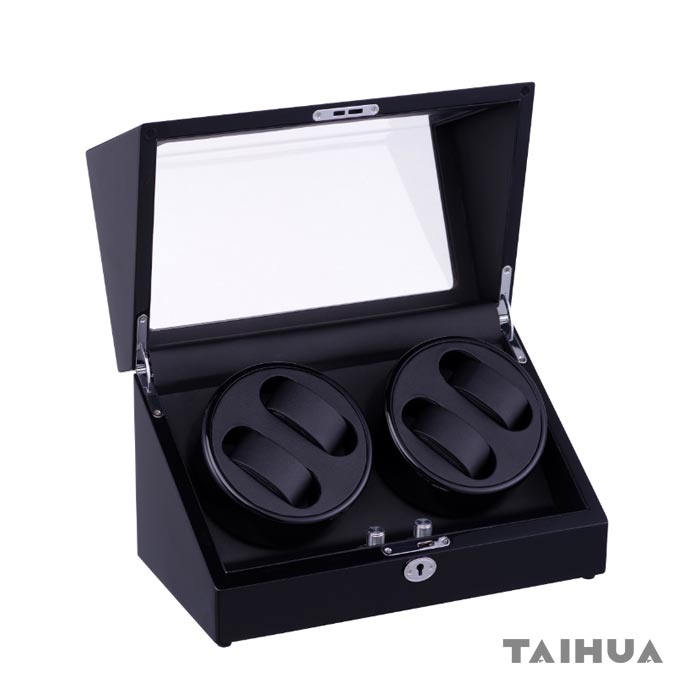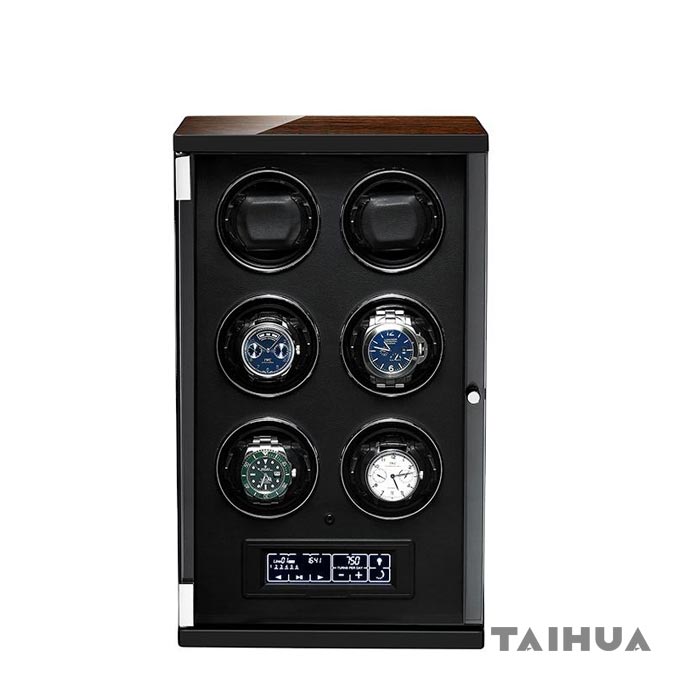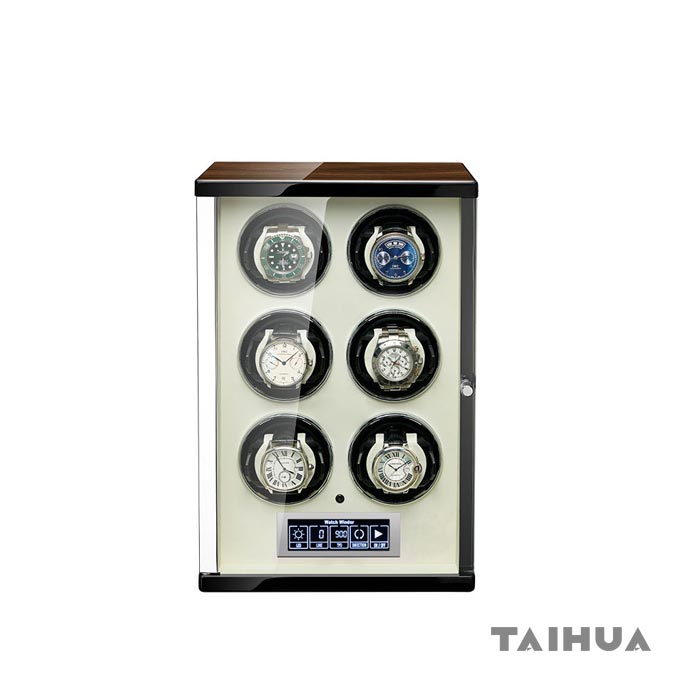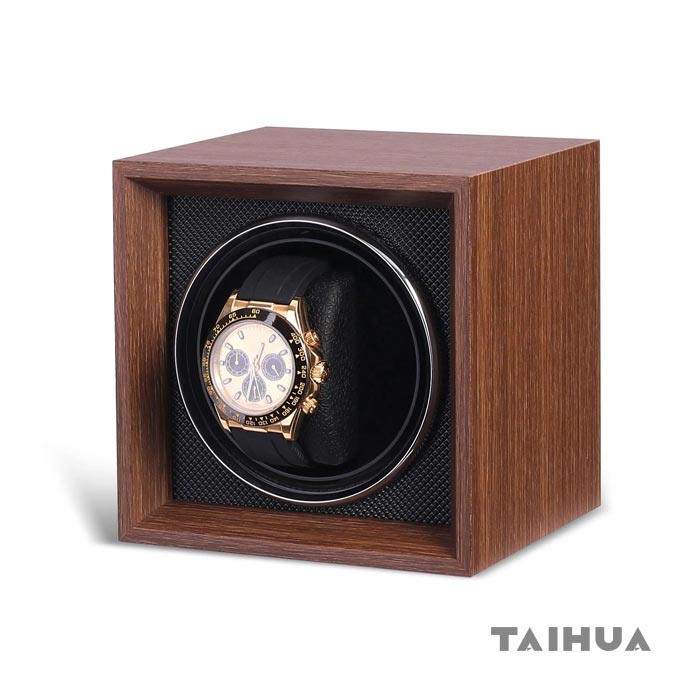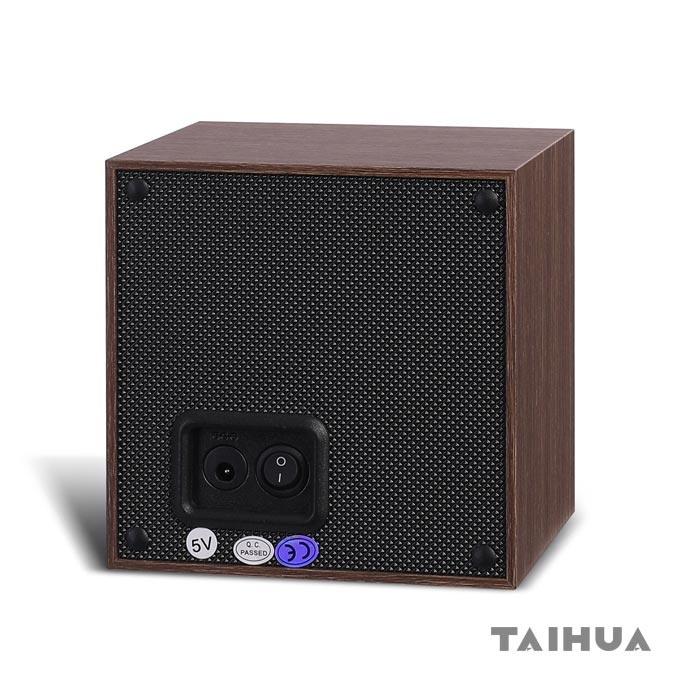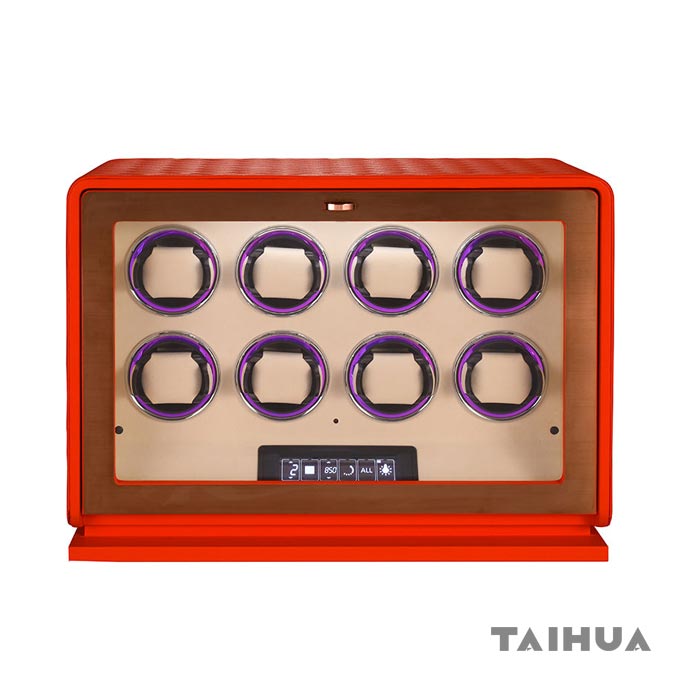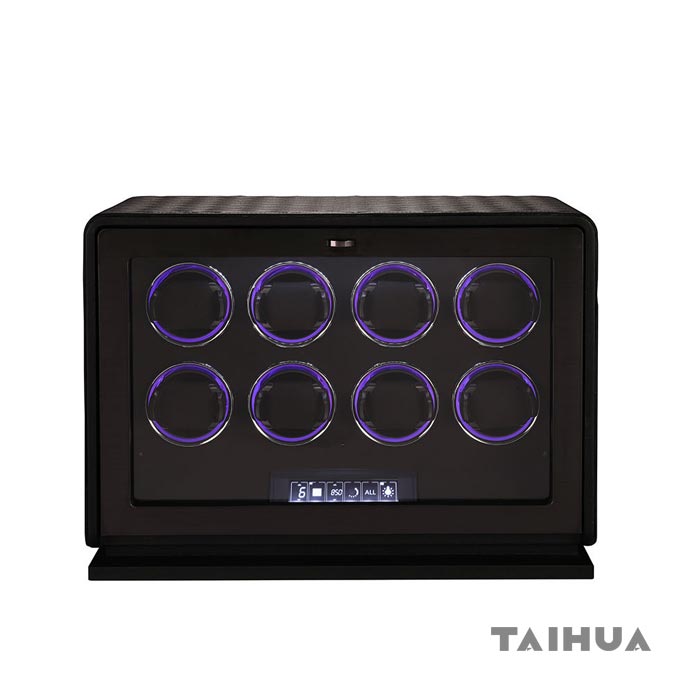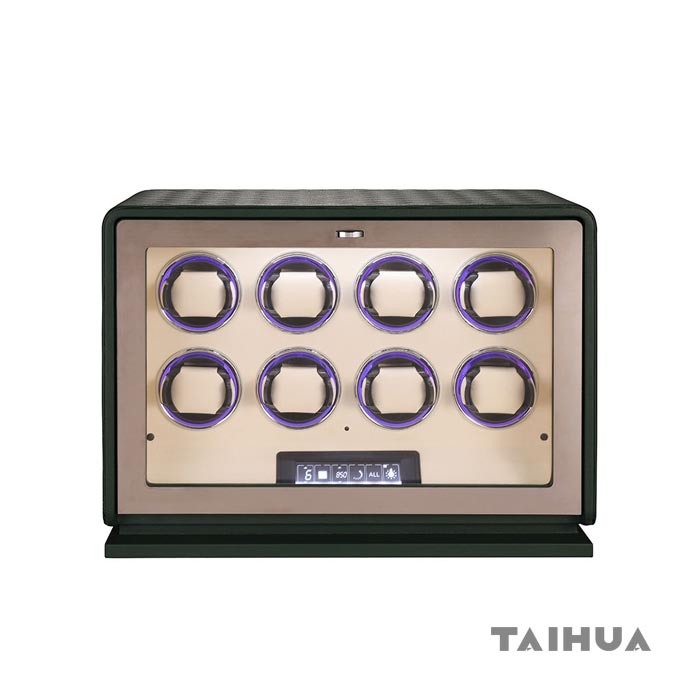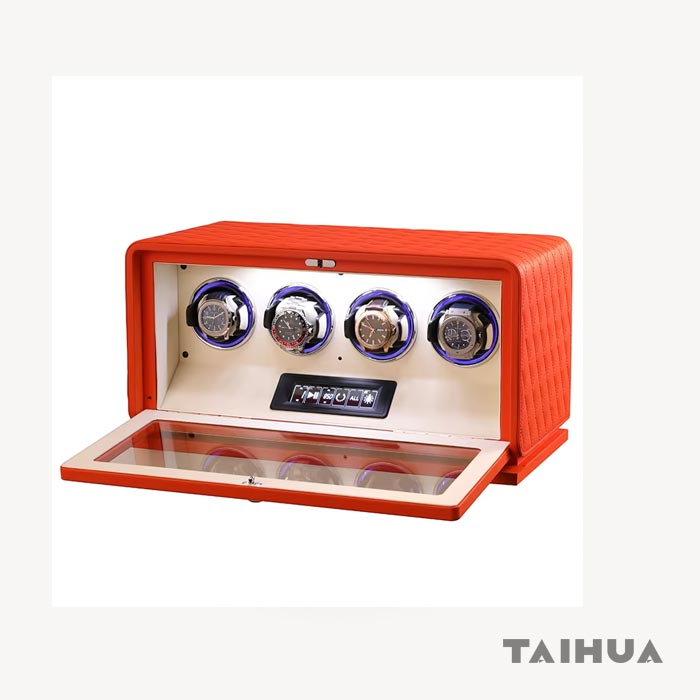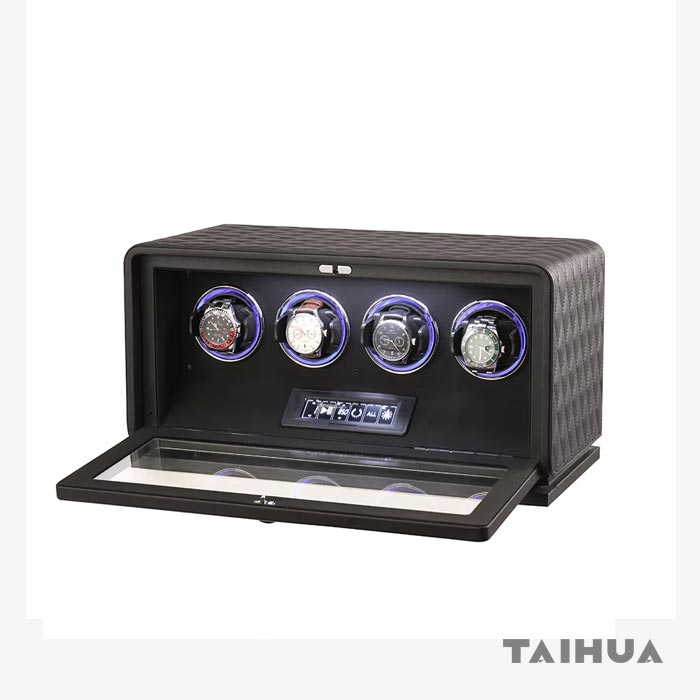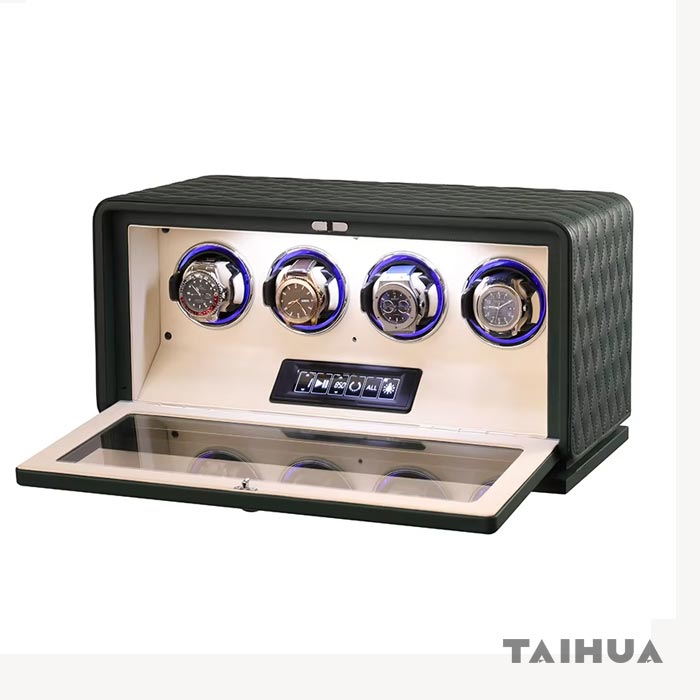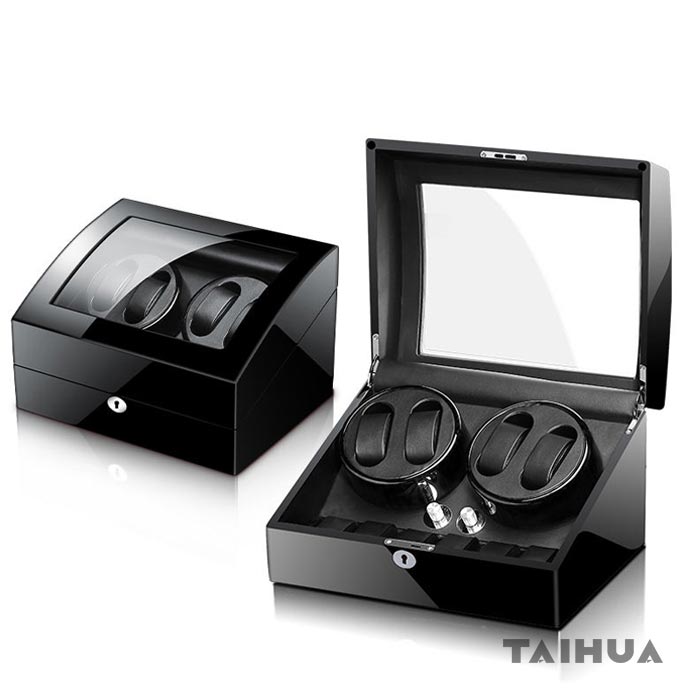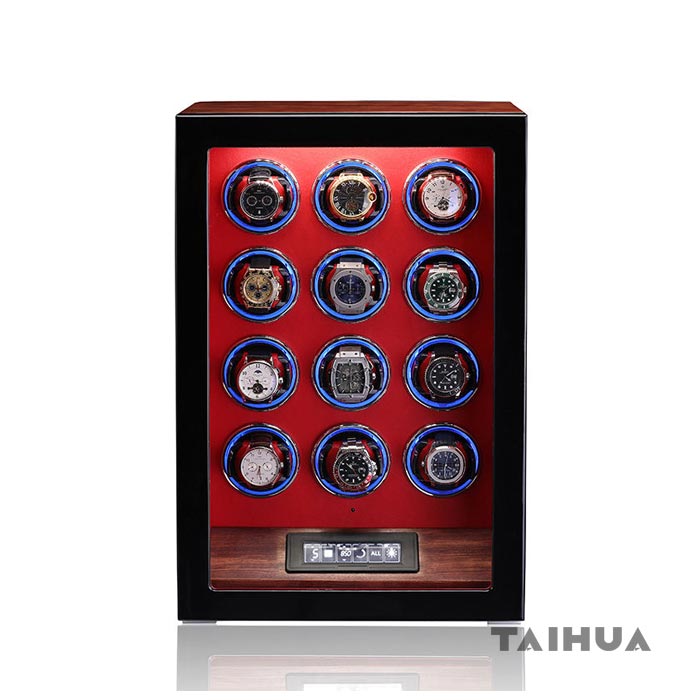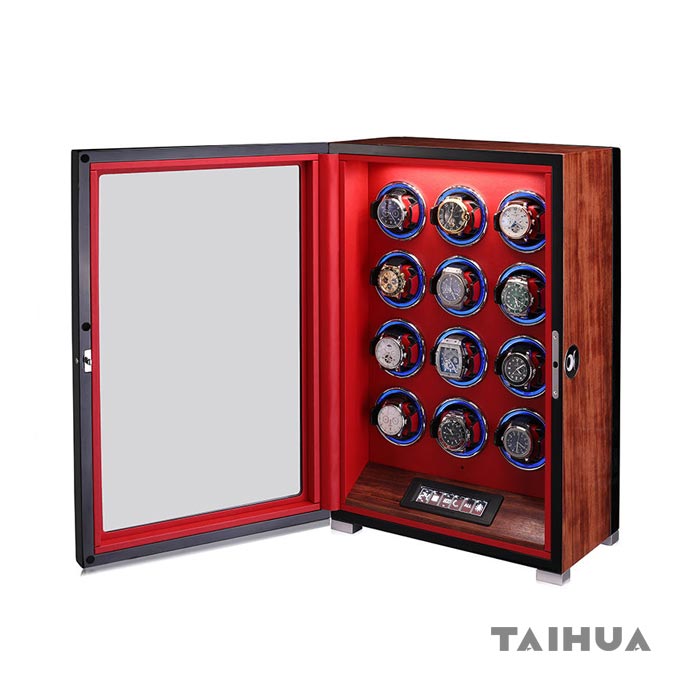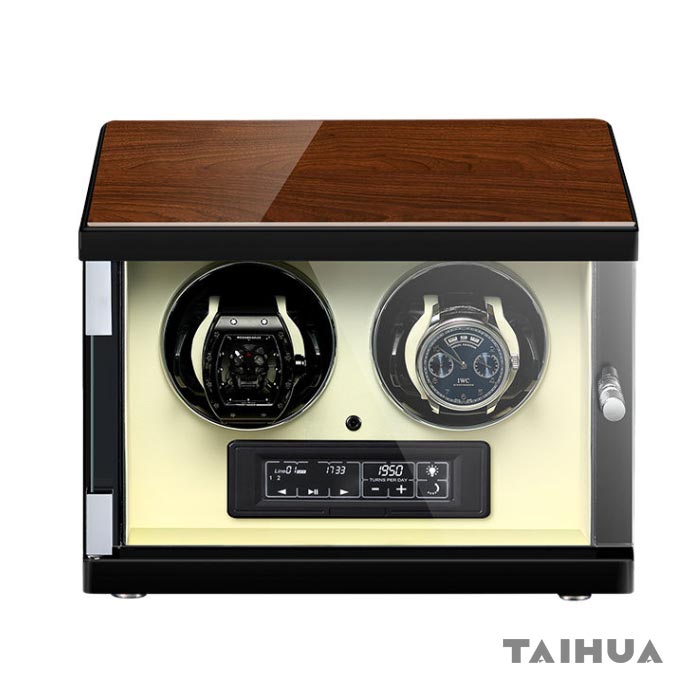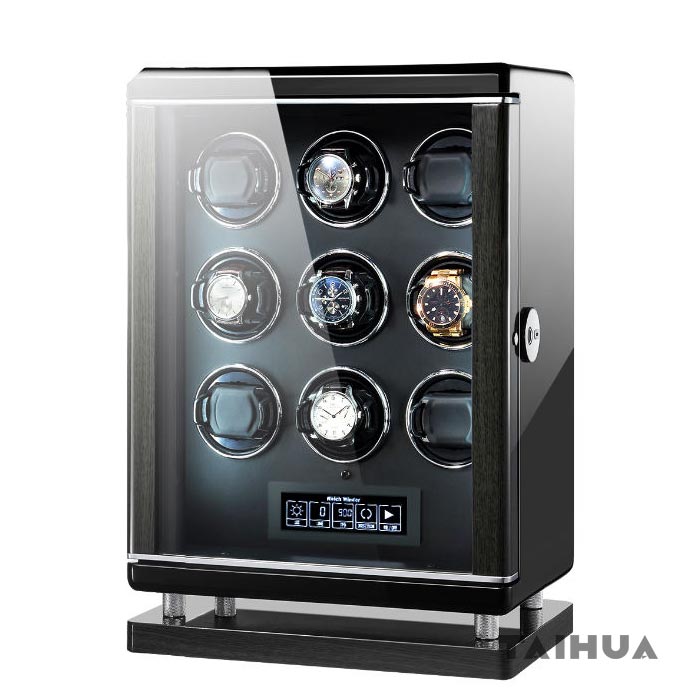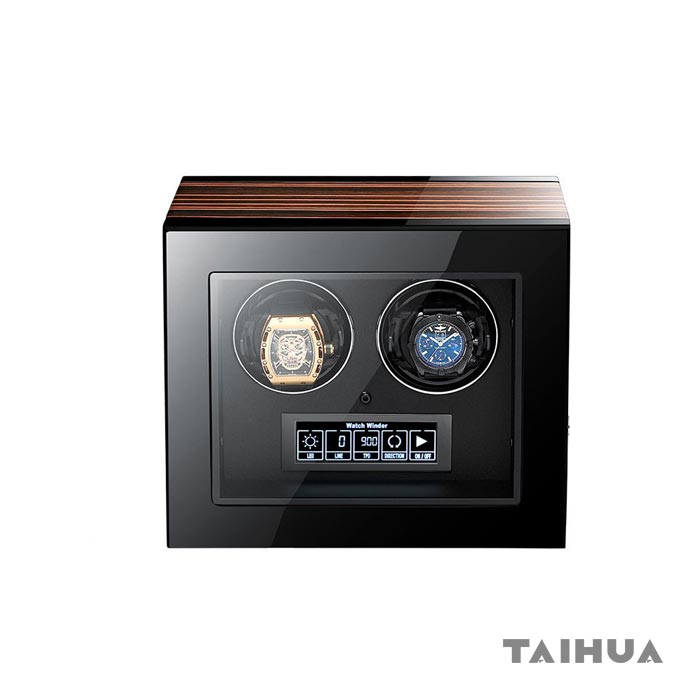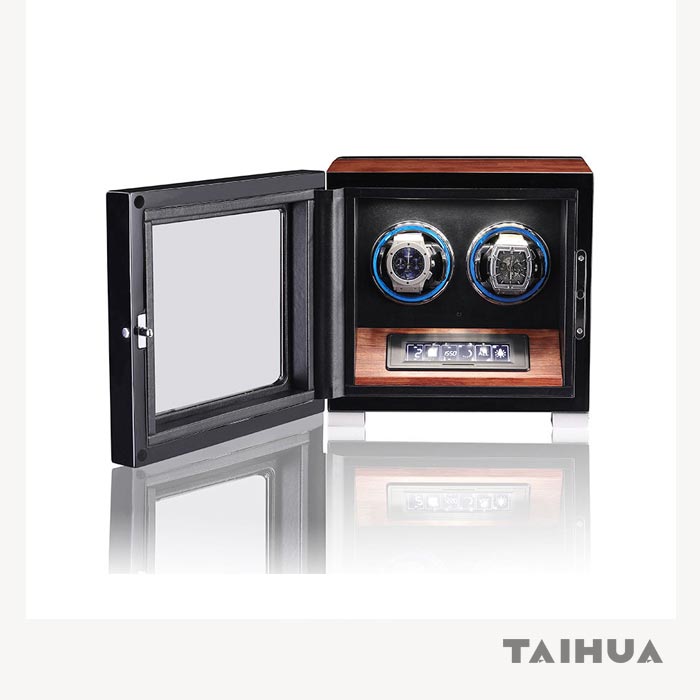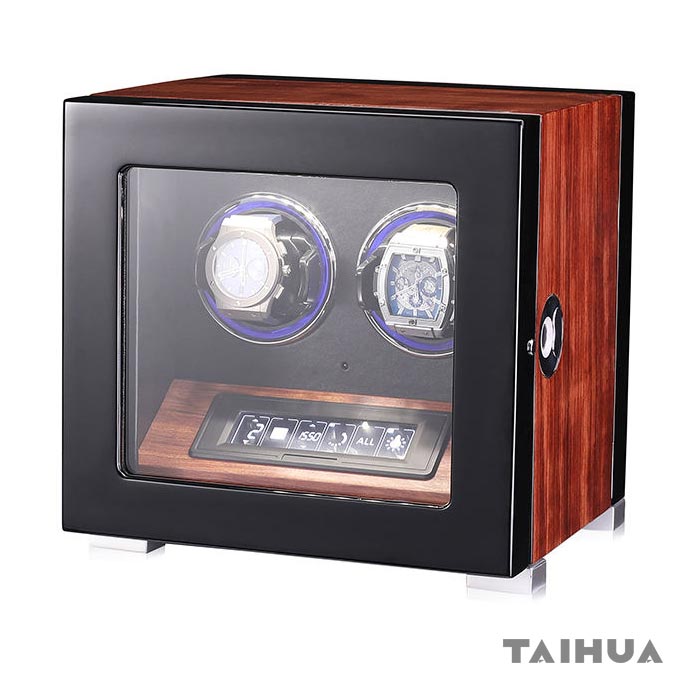Step-by-Step Guide to Using a Watch Winder
1. Set Up Your Watch Winder
- Place the watch winder on a stable surface away from direct sunlight, extreme heat, or moisture.
- Make sure it’s plugged in (if electric) or has fresh batteries (if battery-operated).
2. Insert Your Watch Correctly
- Remove the watch holder/cushion from the winder.
- Secure your watch on the holder so it fits snugly but not too tight.
- Slide the holder back into the winder slot until it locks in place.
3. Find the Correct Rotation Direction
Automatic watches have two common winding modes:
- Clockwise (CW)
- Counterclockwise (CCW)
- Bidirectional (most modern watches)
? Check your watch manual or manufacturer’s website for the recommended direction.
? If unsure, start with bidirectional mode—it’s safest for most watches.
4. Set the TPD (Turns Per Day)
TPD = How many times the winder rotates the watch in a day.
- Most automatic watches require 500–800 TPD.
- Some models, like certain Rolex and Omega, need 650–900 TPD.
- Overwinding is rare (modern watches have protection), but too much TPD causes unnecessary wear.
? Tip: Start low (e.g., 650 TPD) and test if the watch keeps accurate time after 24–48 hours.
5. Start the Winder
- Close the lid (if your model has one) to prevent dust accumulation.
- Switch on the power.
- The winder will rotate based on your chosen settings and then rest periodically to simulate natural wrist movement.
6. Check the Time & Power Reserve
After 24–48 hours:
- Take the watch out and check if it’s keeping accurate time.
- If it runs fast or slow, adjust TPD or direction accordingly.
Best Practices & Tips
✅ Do
- Use the manufacturer’s recommended TPD and direction.
- Keep the winder away from magnets—magnetic fields can affect timekeeping.
- Use a quality winder with quiet motors and smooth rotation.
- Clean the winder periodically to avoid dust buildup.
❌ Don’t
- Don’t leave a watch on a winder 24/7 unless you wear it frequently.
- Don’t set TPD excessively high—unnecessary motor wear.
- Don’t put quartz watches on a winder (they don’t need it).
- Don’t use a winder for watches with a manual-wind-only movement.
When to Use a Watch Winder
-
Good for:
- If you rotate between multiple watches.
- If your watch has complications like perpetual calendars, moon phases, or GMTs.
-
Not necessary if:
- You wear the same watch every day.
- Your watch is easy to reset.
Quick Settings for Popular Brands (Reference Table)
| Brand | Direction | TPD Range |
|---|---|---|
| Ball | Bi-directional | 650–800 |
| Baume & Mercier | BD or CW or CCW | 650–800 |
| Bell & Ross | BD or CW | 650–800 |
| Blancpain | CW or CCW | 800 or higher |
| Breitling | BD or CW | 650–800 |
| Carl F. Bucherer | Bi-directional | 650–800 |
| Cartier | BD or CW | 650–800 |
| Chanel | Bi-directional | 650–800 |
| Chopard | BD or CW | 800 or higher |
| Concord | BD or CW | 650–800 |
| Corum | BD or CW | 650–800 |
| Hamilton | BD or CW | 800 or higher |
| Hublot | BD or CW | 800 or higher |
| Invicta | BD or CW | 800 or higher |
| IWC | BD or CW | 800 or higher |
| Jaeger-LeCoultre | BD or CCW | 650–800 |
| Longines | Bi-directional | 650–800 |
| Louis Vuitton | Bi-directional | 650–800 |
| Montblanc | BD or CW | 800 or higher |
| Omega | BD or CW | 650–800 |
| Oris | BD or CW | 650–800 |
| Panerai | BD or CW | 800 or higher |
| Patek Philippe | Counter-clockwise | 800 or higher |
| Rolex | Bi-directional | 650–800 |
| TAG Heuer | BD or CW | 800 or higher |
| Tissot | BD or CW | 650–800 |
| Tutima | BD or CW | 800 or higher |
| Ulysse Nardin | BD or CW | 800 or higher |
| Vacheron Constantin | BD or CW or CCW | 650–1000 |
| Xemex | BD or CW | 650–800 |
| Zenith | Bi-directional | 650–800 |
| Zeno | BD or CW | 650–800 |
Notes & Tips
- Bi-directional (BD) is often the safest default if you're unsure of the correct winding direction.
- TPD (Turns Per Day) generally ranges between 650 to 800 for most brands, while those with larger power reserves or complex movements may require 800 or even 1000+.
- For Patek Philippe, a counter-clockwise direction is recommended.
- Blancpain, Chopard, Hamilton, Hublot, Invicta, IWC, Montblanc, Panerai, TAG Heuer, Tutima, and Ulysse Nardin generally require higher TPD (800 or more).
- Vacheron Constantin may go up to 1000 TPD, depending on the model.
What If Your Brand or Model Isn’t Listed?
- Start with a safe default: 650 TPD, bi-directional.
- Monitor the watch’s timekeeping and power reserve over 24–48 hours.
- Adjust upward in small increments if the watch runs down too quickly; or alter direction if needed.

